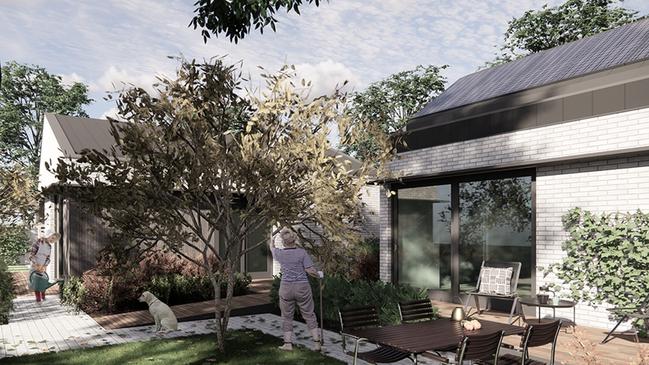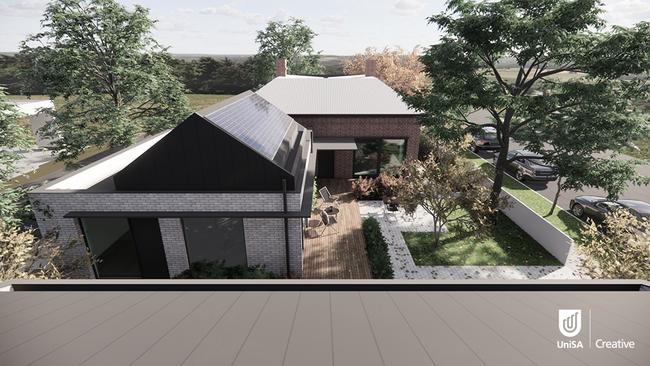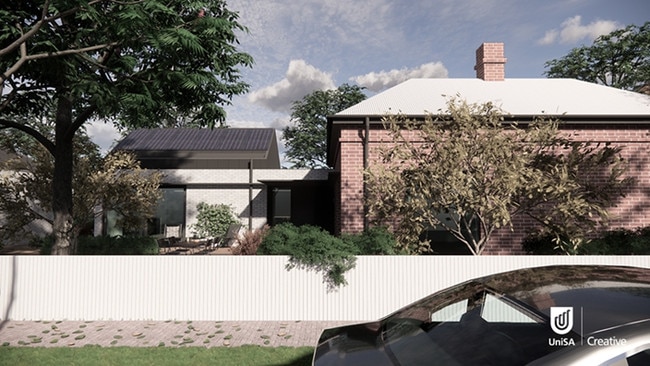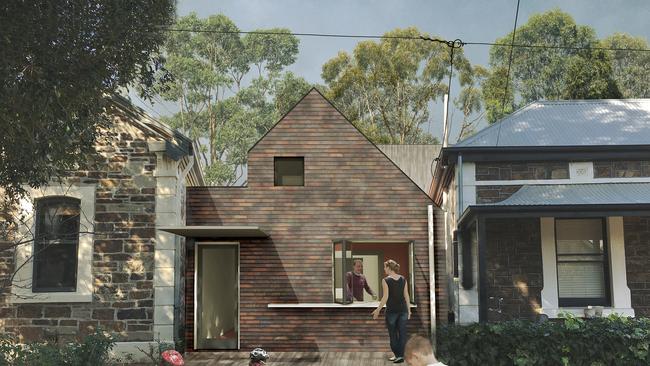Explained: South Australia’s nation-leading new ‘Future Living’ co-located housing laws
Nation-leading housing reforms will allow multiple dwellings inside homes, in SA’s latest bid to tackle the housing crisis.

SA News
Don't miss out on the headlines from SA News. Followed categories will be added to My News.
South Australia has passed nation-leading planning laws allowing people to arrange creative forms of “co-located” living by dividing or expanding a property into separately owned entities.
The Future Living Code Amendment, adopted in late April, is set to apply across six councils that developed the legislation with UniSA and the state government: Unley, Walkerville, Campbelltown, Burnside, Prospect and Alexandrina.
The bid to tackle the housing crisis has been described as one of “the most creative pieces of planning policy in years” by SA planning and housing expert Michael Lennon, who also said the laws took advantage of under-utilised housing stock and gave flexibility to families for co-living arrangements.
“Property within a property”
The laws allow for multiple properties to be created on a block on the condition the existing home is retained – giving people freedom to create additional external dwellings on the same block or a “house within a house” by altering or extending the dwelling.
Legally, parts of the property would become separate entities with distinct owners.


Mr Lennon said owners could decide an arrangement that suited them, such as altering a house’s hallways to create physical barriers for privacy, while sharing a living room or a kitchen – “kind of like a grown-up student house”.
“It allows people to negotiate the best form of adaptation to meet their individual circumstances,” he said. “People are co-investing in it and they have defined rights of occupation and ownership.”
UniSA architecture professor Damian Madigan first developed the model in his PhD about ten years ago and has worked on the policy for four years with the state government and local councils.
“(The laws say) we will consider any number of dwellings on the site if they can make it work within the existing planning constraints of the area,” Prof Madigan said.
“It’s allowing people to do something that looks and feels like a single family home, but it operates legally and financially like a small block of units.
“The Torrens title gets converted to a community title to allow that housing to be individually borrowed for.”
He said it could be described as a “property within a property” but stressed there would not primary and secondary dwellings, saying “they’re all just dwellings on the allotment”.
Under the legislation, separate property owners must share open space – at least 24m2 per dwelling on the block
What’s the point?
Planning Minister Nick Champion said this type of housing could allow large families to live in multiple homes on a big block, or suit people wanting to downsize or age in place.
“It will allow for greater housing diversity and more affordable options for different households, life stages and lifestyle choices,” he said.
Local Government Association chief executive Clinton Jury said it would “increase housing supply in established neighbourhoods without losing what people love about their locality – things like traditional streetscapes, established gardens and mature trees”.
Mr Lennon said the amendment responds to “the desire of people to retain much of the housing stock in (local areas), in many cases avoiding demolition for undercapitalised land”.
“It addresses the steadily declining household size in the inner suburbs, which has the unfortunate impact of under-utilisation of existing housing stock.
“And it has the potential to give flexibility to extended families where there’s a desire for co-living and cohabitation.”

What’s industry saying?
Urban Development Institute Australia SA chief executive Liam Golding said his association supported the policy but he did not believe there would be strong uptake.
“This is a good initiative that may provide some additional flexibility and some additional housing, but we think the yield will be so low that we still need to do a lot of other things to get the housing that we need for South Australia,” he said.
“We think in many cases those allotments (where this could be suited) will be developed in a more traditional subdivision way for greater profit.
“There’s a lot of traditional work on rezoning that needs to be done to lead to the volume of housing we need to address the housing crisis.”

Housing Industry Association executive director Stephen Knight said his association supported the laws, but said it would probably apply to “more expensive type developments rather than affordable housing”.
“It’s a good step in the right direction; it’s a legitimate solution for people ageing in place,” he said.
“It would be good if eventually it was able to be translated into outer suburbs, where perhaps it can be used as another way of creating more affordable housing.”
When will it come into effect?
The government has asked the six participating councils to formally confirm their support of the policy. Upon their confirmation, the new rules will come into effect in their areas.
The government said any interested council could apply the policy in future through their own code amendment processes, which would include consulting with their local communities.
Spokespeople for Prospect, Campbelltown, Burnside and Alexandrina said their councils would decide whether to support the legislation at upcoming council meetings.
The state government has separately proposed the Accommodation Diversity Code Amendment, which has not yet been passed and would also change planning rules relating to shared-living accommodation.
More Coverage
Originally published as Explained: South Australia’s nation-leading new ‘Future Living’ co-located housing laws





